Brushed nickel fixtures can add a touch of modernity to your bathroom. However, the biggest drawback to these fixtures is that they tend to spot rather easily, and delicate care must be taken when cleaning them, or else they might be damaged during the process. So how do you clean brushed nickel fixtures without damaging them? We've looked into this matter for you, and in this post, provide instructions on how to clean brushed nickel fixtures.
Here are the steps to properly clean your brushed nickel bathroom fixtures:
- Gather your cleaning supplies
- Apply the appropriate cleaning solution
- Gently scrub fixtures, nooks, and crannies
- Rinse off the cleaning solution
- Dry the fixtures
Bathroom fixtures will need to be cleaned periodically as they become spotted with hard water stains, grime, soap scum, and debris. Brushed nickel fixtures are relatively easy to clean once you figure out the right cleaning solutions for them. Continue reading to learn more about the solutions and methods that work best.
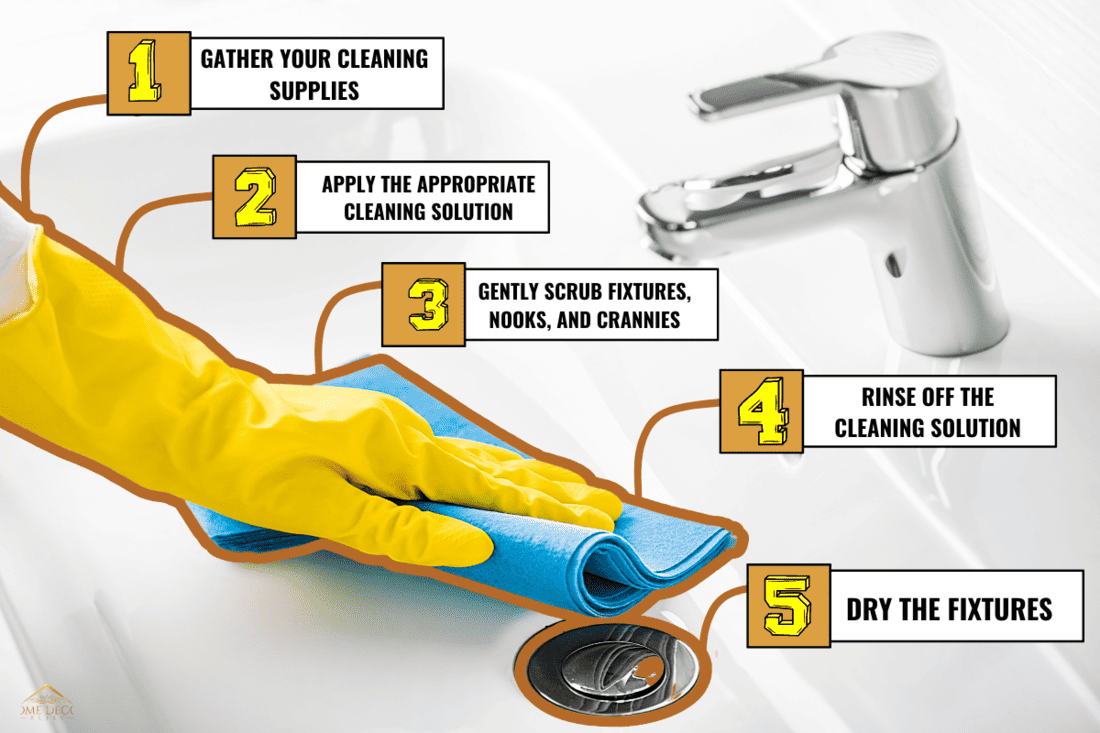
Steps To Clean Brushed Nickel Bathroom Fixtures
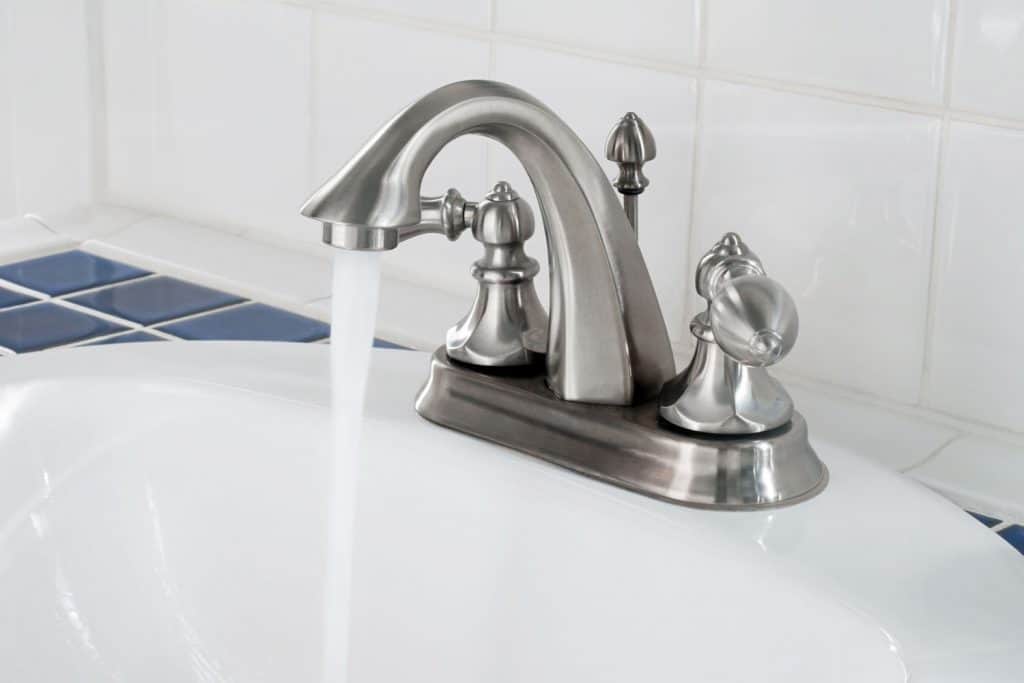
We may include affiliate links and curated AI content to highlight top design styles.
Things you'll need:
- 2 cleaning cloths
- Non-abrasive cleaner
- Vinegar
- Baking soda
- Spray bottle
- Mild dish soap
- Disposable toothbrush
- Dryer sheet
1. Gather your cleaning supplies
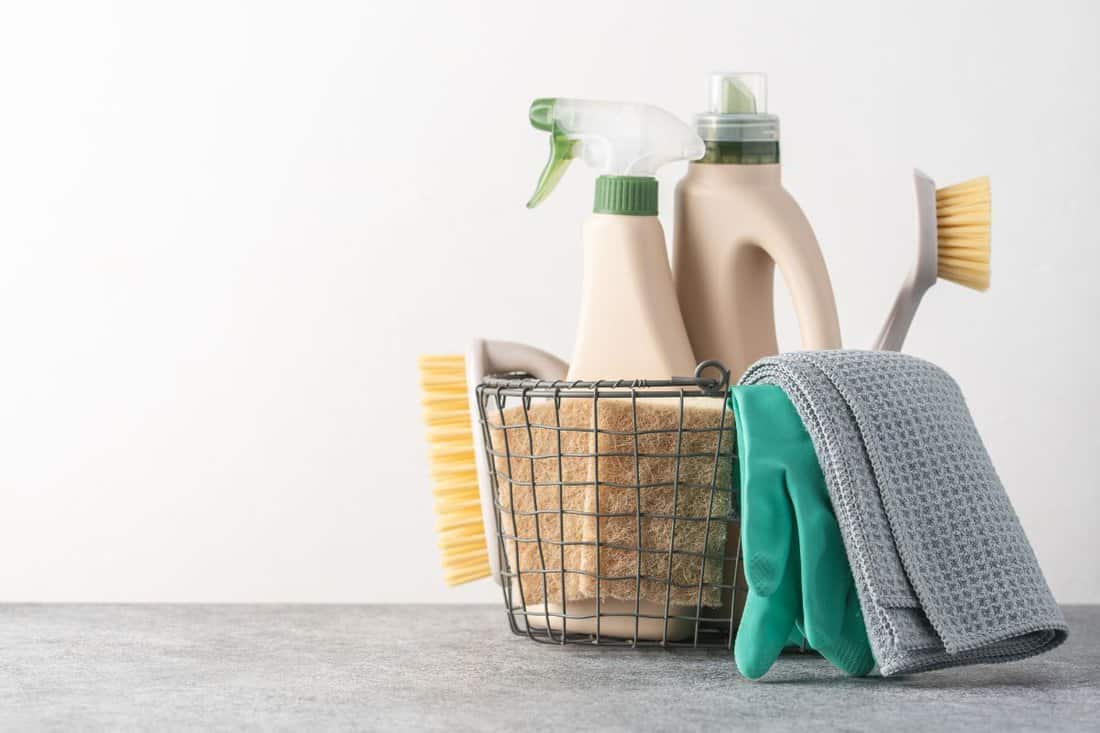
Before cleaning your brushed nickel fixtures, it's important to know what cleaning solution to use. You want to stay away from harsh cleaners because many companies offer limited warranties on newly installed bathroom fixtures. Often, these warranties are void if you use corrosive or caustic cleaners on the new fixtures. When you buy new bathroom fixtures, always look at the warranty information and the recommended cleaning agents.
The easiest, simplest way to clean your brushed nickel bathroom fixtures is to use mild dish soap. If you have stubborn water stains, limescale, or calcium buildup, then you can add vinegar and/or baking soda to the solution to remove them. For the vinegar solution, mix one-part distilled vinegar with one part tap water and pour it into a spray bottle. Once you have your supplies together, place them in the bathroom area on the floor for quick access.
2. Apply the appropriate cleaning solution
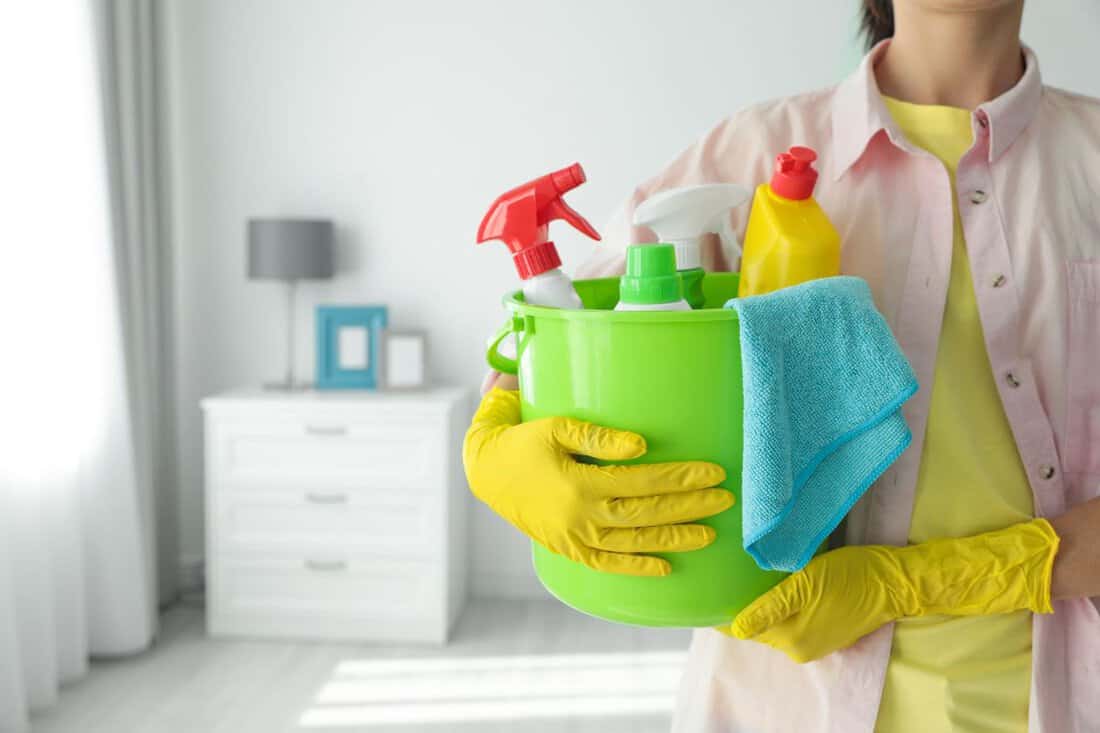
When cleaning your brushed nickel fixtures, always use warm water instead of cold water. Warm water can penetrate mineral deposits quicker and help to break them up faster than cold water. Start by pouring a few drops of mild dish soap into a spray bottle and then fill it with water. Spray the solution onto a soft cloth or sponge and then use it to wipe down the fixtures.
This is a good place to determine if you'll need to add vinegar or baking soda. If you notice that the spots are not going away, take the vinegar solution and pour it onto the fixtures, allowing it to sit for about 2 to 5 minutes. The maximum time that you should leave the vinegar on your brushed nickel fixtures is 30 minutes. Regular cleaning can cause the nickel to tarnish if you leave it on for longer than it is.
See this baking soda on Amazon.
Work your way over to the towel racks and then the bathtub fixtures. If any of the fixtures have spots that are not responding to the vinegar, combine a tablespoon of baking soda with 1/4 cup of water and rub the paste onto the fixture's surface using a microfiber cloth. If needed, allow the paste to sit on the fixture for 2 to 5 minutes to help break-up the mineral deposits.
3. Gently Scrub Fixtures, Nooks, and Crannies
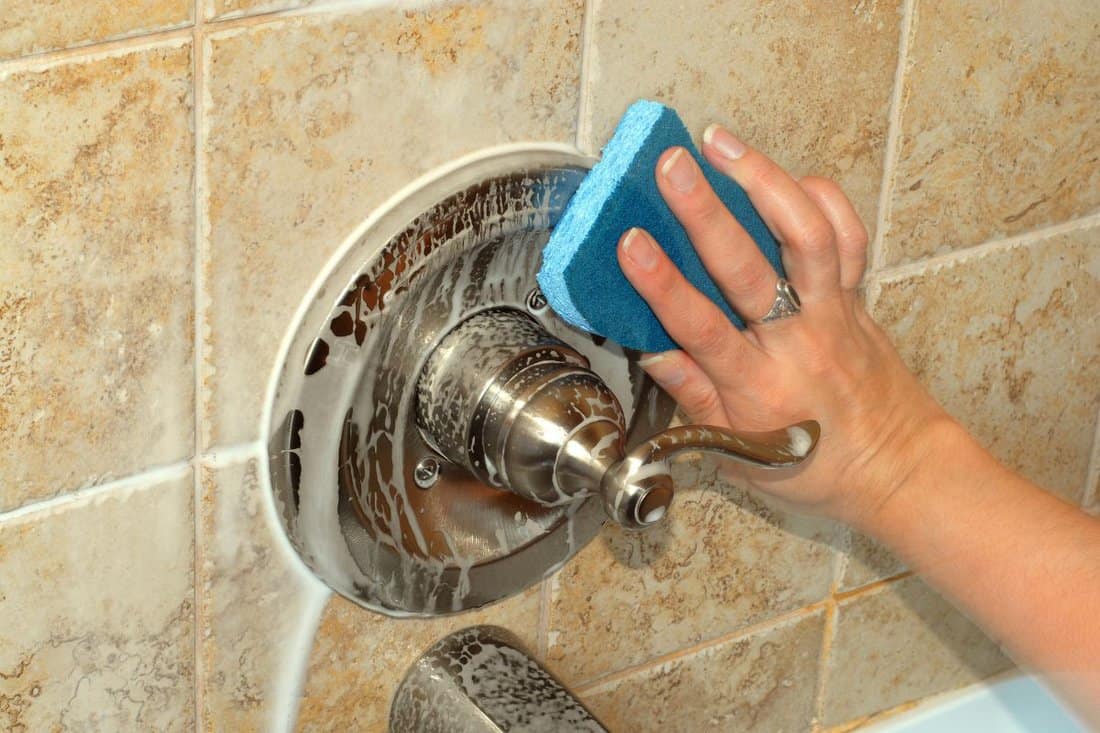
Be sure to clean around the fixtures' edges, where water tends to accumulate. And don't be afraid to get in there with your toothbrush to help scrub dirt and grime out of those small nooks and crannies between the fixtures. When cleaning the drains in the bathtub and the sink, use a toothbrush as it can be difficult to get between the slots.
Avoid harsh scrubbing tools such as scouring pads and heavy stiff-bristled brushes. It's also helpful to run your disposable toothbrush under hot water before using it to clean the nickel surface. Remember, brushed nickel is more delicate than other bathroom fixture materials. If you want to keep your fixtures looking brand new for a long time, stay away from any tools that may scratch their surface.
If you find that your brushed nickel bathroom fixtures have layers of soap scum that don't seem to go away, try scrubbing them with a dryer sheet. You read it right; a dryer sheet can help to remove soap scum from your fixtures. Simply hold the dryer sheet with both hands and slide it from side to side to help buff out the soap scum stains.
It's best to do this after applying cleaners beforehand, however. Be sure that the dryer sheet is new, and bring a few as you may need more than one sheet per fixture. If the soap scum is too dry to move the sheet, add a bit of olive oil or cooking spray to reduce the friction. Finish by cleaning the fixture with mild soap, rinsing it off, and buffing it dry with a clean cloth.
See these dryer sheets on Amazon.
4. Rinse off the cleaning solution
Once you have thoroughly cleaned all of the fixtures in the bathroom, take a damp rag and wipe down each fixture to remove the cleaning solution. It's also helpful to remove your detachable shower arm and spray the tub faucet. Ensure that you remove all of the soap and/or vinegar from the fixtures, as you don't want to leave a residue from the soap or tarnish result from the vinegar.
5. Dry the fixtures
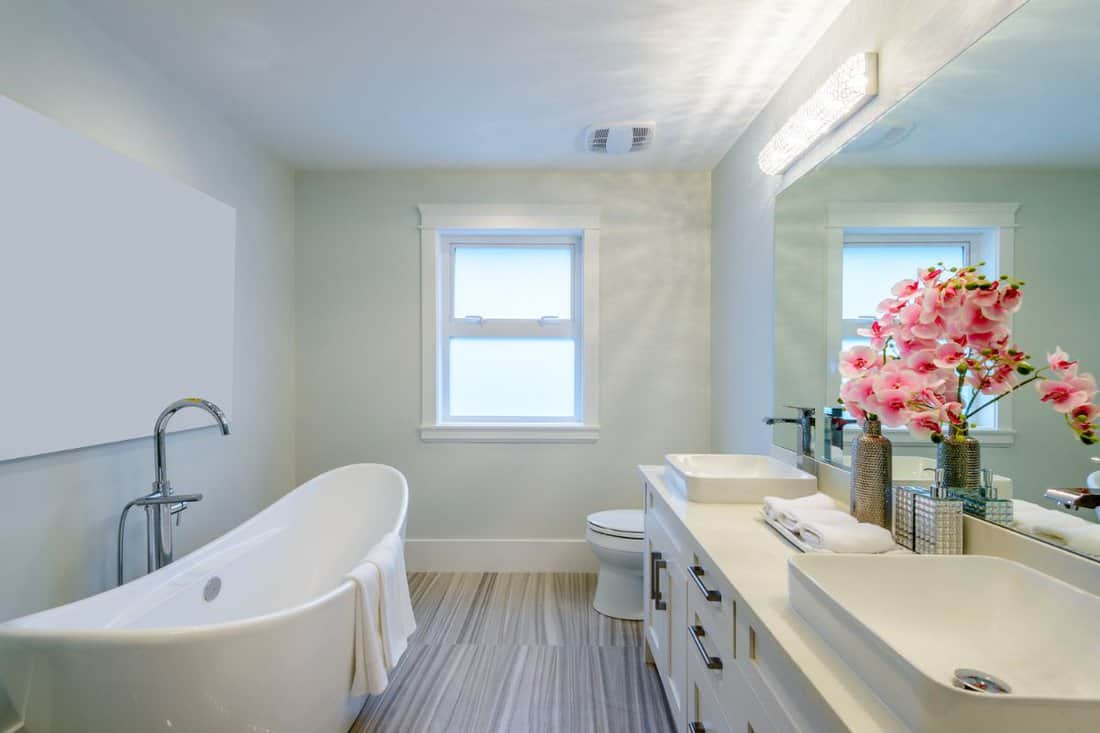
Brushed nickel is a matte surface, meaning that it does not require wax after cleaning. So while you will not need to shine the surface, you should try to buff it dry to remove any lingering oil or residue stains. Once you do, you will notice that the finish looks brand new.
Take a separate, dry cleaning cloth and buff all of the bathroom fixtures. Be sure to remove any smudge stains or fingerprints that you may have created why you were cleaning them. Allow the fixtures to dry for about one to two hours before using them.
Click to see cleaning cloths on Amazon.
Unfortunately, the only way to completely prevent water spots is not to use your bathroom, which isn't an option. However, one thing that you can do to help minimize the water spots on your fixtures is to use a water softener. Water softeners help remove minerals and other substances from the water to make it as clean as possible before it exits your faucets.
See this water softener on Amazon.
How do you remove tarnish from brushed nickel?

Like other metals, brushed nickel can become tarnished if exposed to water and oxygen over an extended period of time. However, the tarnish can be removed using the right cleaning solutions and methods. Let's take a look at how to remove it. First, you'll need to gather:
- White vinegar
- Lemon
- Liquid soap
- Soft toothbrush
- Cleaning cloths
- Sponge
1. Apply vinegar solution
Spray the metal with a vinegar solution consisting of one cup of vinegar and one cup of warm tap water. Let the solution sit on the brushed nickel surface for about 5 minutes.
2. Apply lemon juice
Next, take a tablespoon of lemon juice and pour it over the surface and allow it to sit for 5 minutes. Be sure to time the lemon juice, as it is very acidic, and when combined with the vinegar, it can become too acidic for the brushed nickel.
See this lemon juice on Amazon.
3. Scrub the surface
Take an old or disposable toothbrush and scrub the solution into the brushed nickel surface. Be sure to scrub around the edges and in any cracks and crevices that may be hard to reach with your fingers. If you are cleaning a faucet, be sure to thoroughly clean the handles, spigot, and the bottom of the spout.
4. Rinse the surface
Take a small hand towel or microfiber cloth to rinse the nickel and remove all cleaning solutions. If any of the surfaces still contain tarnish, reapply and follow the previous steps.
5. Buff the metal dry
Use a clean, dry cloth to buff the metal dry. Be careful when doing so to avoid creating any fingerprints or smudge sayings during the process.
Can you use Bar Keepers Friend on brushed nickel?
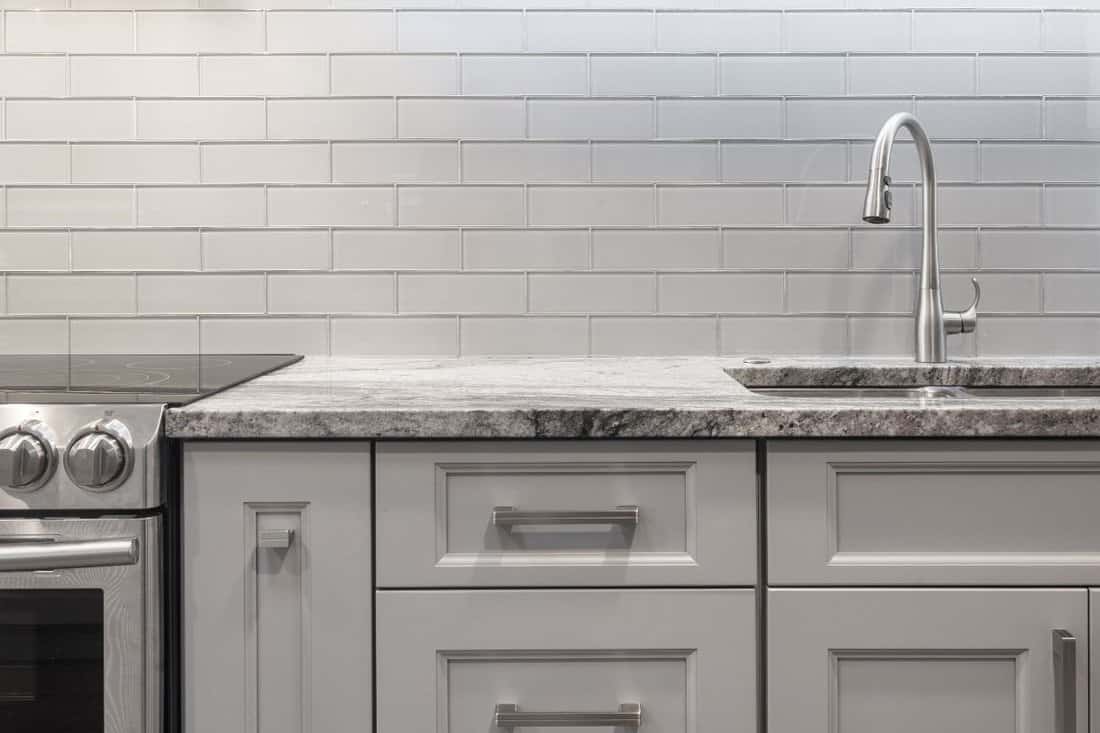
For the most part, Bar Keepers Friend is not recommended as a cleaning solution for brushed nickel. Though it is considered a non-abrasive cleaning solution, it may still be too harsh for the metal. However, some consumers have reported using it successfully on their brushed nickel surfaces. If you plan to do so, it's best to do so with caution. Meaning that you may first want to do a spot test to determine how well your brushed nickel products take to the cleaner and then use it in moderation thereafter.
See Bar Keepers Friend on Amazon.
Can you use CLR on brushed nickel?
While CLR is recommended for nickel surfaces, it is not recommended for brushed nickel surfaces. Brushed nickel surfaces are a bit more delicate than nickel. The best way to clean brushed nickel is to use a mixture of mild soap and water. You can also add vinegar and baking soda briefly to remove hard water stains or lemon juice to remove tarnish.
How often should you clean bathroom fixtures?
Home experts recommend cleaning your bathroom at least once a week, and more if you have several people that use the same bathroom. Bacteria and mold can be allergenic, so if you are only cleaning the bathroom a few times a month, you can be spreading harmful pathogens in the bathroom every time you use it.
Wrapping Things Up
We hope that this post has provided you with the information you were looking for to clean your brushed nickel bathroom fixtures. Before you go, be sure to check out some of our other posts:
11 Types Of Bathroom Wall Coverings
17 Interesting Bathroom Floor Tile Ideas
![A brushed nickel finish faucet inside a modern bathroom with granite top layer bathtub, How To Clean Brushed Nickel Bathroom Fixture [5 Steps]](https://homedecorbliss.com/wp-content/uploads/2021/02/How-To-Clean-Brushed-Nickel-Bathroom-Fixture-5-Steps-683x1024.png)












So I would suggest adding a cautionary note about not using acidic products on your brushed nickel if they are perched on top of a quartz bathroom counter. Acid cannot be used on quartz and many bathroom counters are made of quartz these days.